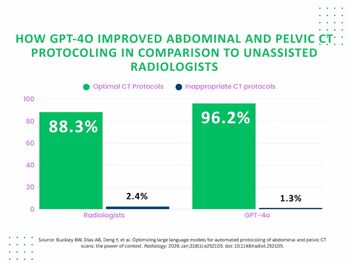
Hitachi makes official its return to nuclear medicine market
V250 DSP finds company in variable-angle segmentGet ready for a new entrant to the already crowded field of gammacameras. Hitachi Medical Corp. of America unveiled a new variable-angledual-head system at this week's Society of Nuclear Medicine
V250 DSP finds company in variable-angle segment
Get ready for a new entrant to the already crowded field of gammacameras. Hitachi Medical Corp. of America unveiled a new variable-angledual-head system at this week's Society of Nuclear Medicine meetingin Denver, marking the debut of Hitachi as a direct marketer ofnuclear medicine products in the U.S.
Until last year, Hitachi sold a line of digital gamma camerasthrough a distribution agreement with Summit Nuclear. When Summitmerged with Sopha in 1995 to form SMV, the game changed (SCAN10/11/95).
"It seemed to make the most sense that Hitachi take itsproducts directly (to the U.S. market) because SMV's focus waschanging -- at least that was Hitachi's impression," saidGary Enos, general manager of the Cleveland-based nuclear medicineproducts division of Hitachi Medical.
Leading Hitachi's charge into the U.S. market will be SPECTRADigitalV250 DSP, a dual-head variable-angle camera with a unique digitalarchitecture, one with individually digitized photomultipliertubes whose signals are decoded using software. This architectureallows the electronics to be packed in the detector heads andgantry, eliminating the need for external electronics cabinetsand thereby reducing the space needed to site the system. Thedigital architecture also provides the basis for future developments,such as coincidence detection imaging of FDG.
Hitachi will focus on using V250 DSP as the flagship for aline of upgradable products to be unveiled over the coming 18months. Following V250 DSP will be the single-head 150 DSP, whichis scheduled for release at this year's Radiological Society ofNorth America meeting. The single-head camera has the same gantryand detector as V250 DSP. A second detector can be easily added,Enos said, and the two heads can be configured to operate as partsof a variable-angle system. A jumbo-detector line of cameras isalso in the works.
Production models of V250 DSP are still several months off,and Hitachi has yet to install a system in the U.S. Attractingsuch beta sites was the objective of Hitachi's presence at theSNM show.
Hitachi also demonstrated its technological prowess in nuclearmedicine at the meeting, in part by exhibiting a work-in-progressdata and image processing system. The new RISC-based workstation,called SPECTRADigital 300SS (Super Scaling), is being developedin partnership with a North American company that Enos declinedto name. Supplier agreements of this type are designed partlyto help overcome problems presented by exchange rate fluctuationsbetween the dollar and yen.
"Hitachi has been improving the American content of thecamera product through what we call `international procurement,"'he said. "In the new DSP camera, there is a considerableamount of American components, although the camera itself is beingmanufactured in Japan."
It will be at least two more years before any significant amountof integration or assembly is performed in the U.S., accordingto Enos, but Hitachi is committed to increasing its U.S. presence.
Accompanying the new camera and work-in-progress computer systemat Hitachi's SNM booth were gamma cameras similar to ones providedby Hitachi to Summit Nuclear. When sold under the Summit label,the single-head camera was called 1024RZ and the dual-head systemwas called T-22. As Hitachi products, they will be sold underthe names 150DS and 260DS (Digital System), respectively. Enosexplained that Hitachi has made various improvements, includingsoftware enhancements, which led the company to seek Food andDrug Administration clearance for the cameras as new products.
These products will have a limited life span in the Hitachiproduct line, however, and will be phased out as the company commercializesnew members of the DSP family and pursues a new direction in digitalgamma camera design. It is a direction that Enos and Hitachi hopewill distinguish their products in the extraordinarily competitiveU.S. gamma camera market.
Newsletter
Stay at the forefront of radiology with the Diagnostic Imaging newsletter, delivering the latest news, clinical insights, and imaging advancements for today’s radiologists.




























